
WAGA ENERGY
Activités
Valorisation du biogaz des sites de stockage des déchets sous forme de biométhane
Waga-Energy produit du biométhane, substitut renouvelable du gaz naturel, en valorisant le biogaz des sites de stockage des déchets (communément appelés « décharges »). Grâce à sa technologie WAGABOX®, combinant filtration membranaire et distillation cryogénique, Waga-Energy récupère le méthane produit spontanément par la dégradation des matières organiques contenues dans les déchets, pour l’injecter directement dans les réseaux de distribution du gaz naturel.
La plupart des déchets que nous produisons aboutissent sur des sites d’enfouissement. Une fois enfouies, les matières organiques qu’ils contiennent se dégradent et produisent un biogaz contenant une forte proportion de méthane, mélangé à du dioxyde de carbone, de l’air (oxygène et azote) et divers polluants. Ce biogaz est très difficile à valoriser du fait de la présence d’air, et de son caractère hautement variable et imprévisible.
Fruit de dix années de R&D, la technologie WAGABOX® combine filtration membranaire et distillation cryogénique pour séparer le méthane des autres composants du gaz de décharge. Elle fournit du biométhane de haute qualité, injecté directement dans le réseau de gaz. Les WAGABOX® sont des unités d’épuration entièrement automatisées : elles fonctionnent 24/24 et 7/7 et sont pilotées à distance grâce à un dispositif de supervision.
Waga Energy déploie cette solution dans le cadre d’un modèle d’investisseur-exploitant : Waga Energy achète du gaz de décharge aux exploitants de site d’enfouissement, finance la construction des unités WAGABOX® et leur raccordement au réseau de gaz, et génère des revenus en revendant du biométhane aux énergéticiens.
La première unité WAGABOX® a été mise en service en France en février 2017 grâce à un financement de l’Ademe dans le cadre du Programme d’investissement d’Avenir. Quatre ans plus tard, dix unités WAGABOX® sont en exploitation en France. Elles alimentent 35 000 foyers et évitent l’émission de 45 000 tonnes d’eqCO2 par an dans l’atmosphère, en substituant du biométhane au gaz naturel fossile.
Chiffres clés
- Effectif
- 65
- Chiffre d’affaires
- 10,5
Références
Unité WAGABOX® de Saint-Florentin (Yonne)
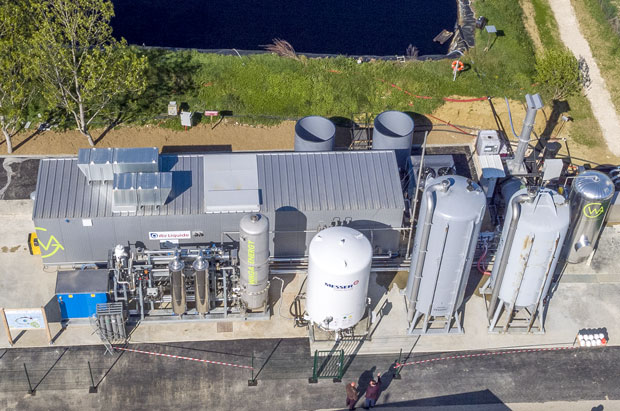
Mise en service : 14 février 2017
Exploitant du site de stockage des déchets : Coved-Paprec
- 70 000 tonnes de déchets stockés par an
- Biogaz : 40-50 % CH4 | 0-3 % O2 | 1 500 ppmv H2S | 5-25 % N2
- Distance du réseau avant travaux : 3 kilomètres
- Capacité de l’unité : 25 GWh/an

Unité WAGABOX® de Saint-Maximin (Oise)
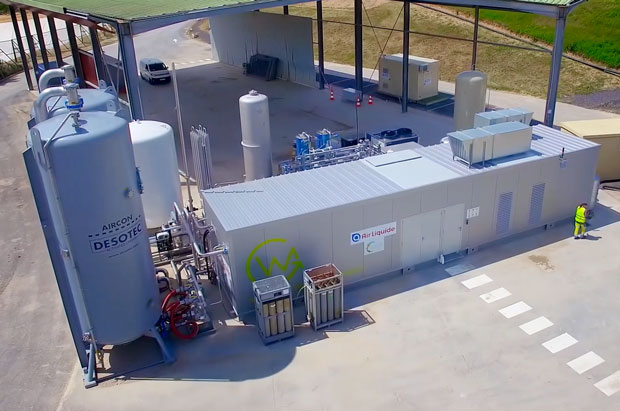
Mise en service : 26 juin 2017
Exploitant du site de stockage des déchets : Suez
- 200 000 tonnes de déchets stockés par an
- Biogaz : 45-50 % CH4 | 0-3 % O2 | 7 000 ppmv H2S | 5-20 % N2
- Distance du réseau avant travaux : 1,2 kilomètre
- Capacité de l’unité : 25 GWh/an

Unité WAGABOX® de Pavie (Gers)
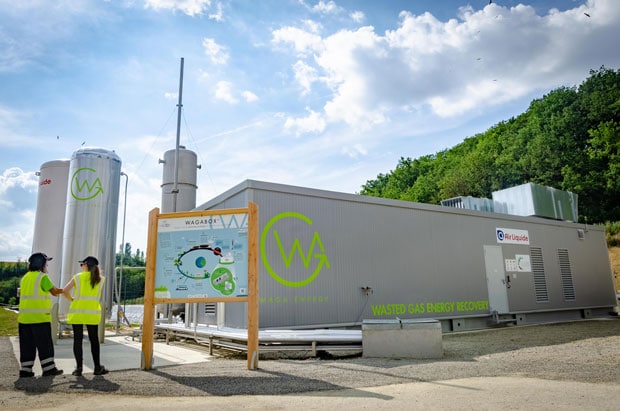
Mise en service : 30 mai 2018
Exploitant du site de stockage des déchets : Trigone (syndicat mixte)
- 40 000 tonnes de déchets stockés par an
- Biogaz : 45 % CH4 | 0-3 % O2 | 500 ppmv H2S | 5-25 % N2
- Distance du réseau avant travaux : 3 kilomètres
- Capacité de l’unité : 15 GWh/an

Unité WAGABOX® de Saint-Palais (Cher)
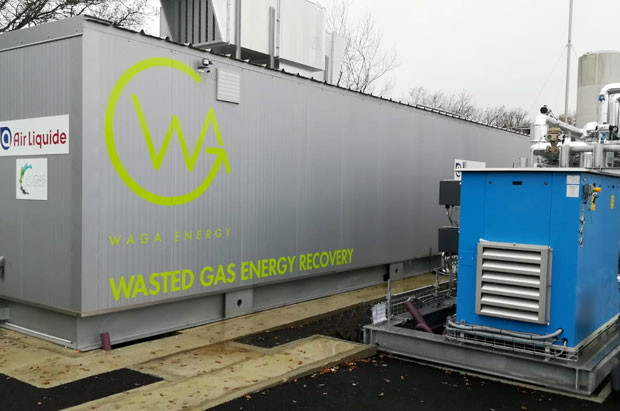
Mise en service : 6 novembre 2018
Exploitant du site de stockage des déchets : Veolia
- 90 000 tonnes de déchets stockés par an
- Biogaz : 40-50 % CH4 | 0-3 % O2 | 1 000 ppmv H2S | 5-20 % N2
- Distance du réseau avant travaux : 1,6 kilomètre
- Capacité de l’unité : 20 GWh/an
![]()
Unité WAGABOX® de Gueltas (Morbihan)
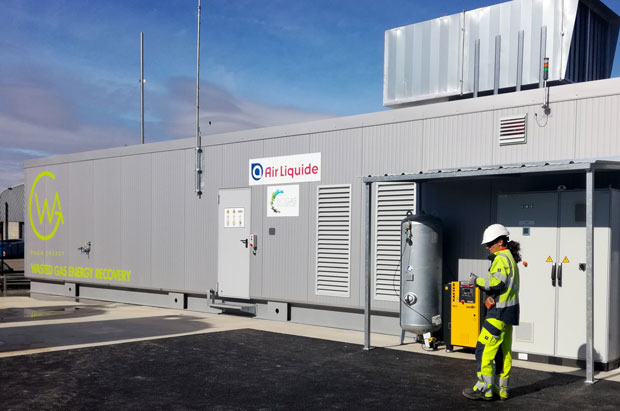
Mise en service : 13 novembre 2018
Exploitant du site de stockage des déchets : Suez
- 200 000 tonnes de déchets stockés par an
- Biogaz : 45-50 % CH4 | 0-5 % O2 | 1 000 ppmv H2S | 5-20 % N2
- Distance du réseau avant travaux : 6 kilomètres
- Capacité de l’unité : 25 GWh/an

Unité WAGABOX® de Chevilly (Loiret)
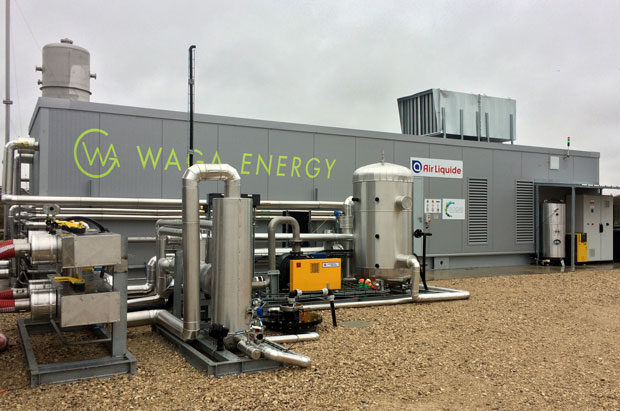
Mise en service : 20 décembre 2018
Exploitant du site de stockage des déchets : Suez
- 60 000 tonnes de déchets stockés par an
- Biogaz : 45-50 % CH4 | 0-3 % O2 | 4 000 ppmv H2S | 5-20 % N2
- Distance du réseau avant travaux : 6 kilomètres
- Capacité de l’unité : 15 GWh/an

Unité WAGABOX® de Kermat (Morbihan)
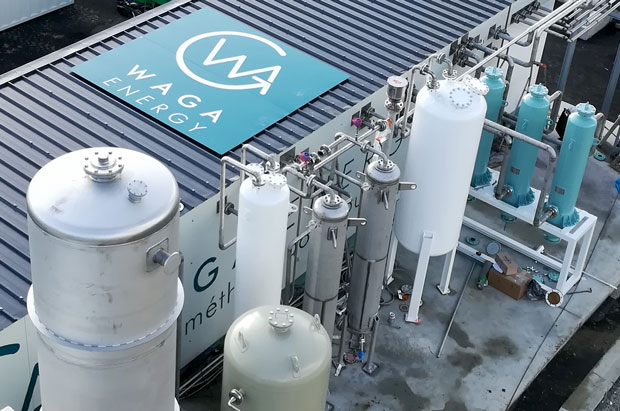
Mise en service : 26 novembre 2019
Exploitant du site de stockage des déchets : Lorient-Agglomération (communauté de communes)
- 60 000 tonnes de déchets stockés par an
- Biogaz : 45-50 % CH4 | 0-3 % O2 | 4 000 ppmv H2S | 5-20 % N2
- Distance du réseau avant travaux : 6 kilomètres
- Capacité de l’unité : 15 GWh/an

Unité WAGABOX® de Les Ventes-de-Bourse (Orne)
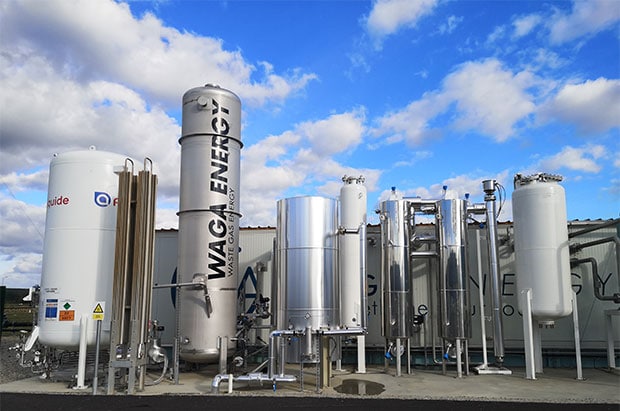
Mise en service : 15 janvier 2020
Exploitant du site de stockage des déchets : Suez
- 120 000 tonnes de déchets stockés par an
- Biogaz : 45-50 % CH4 | 0-3 % O2 | 4 000 ppmv H2S | 5-20 % N2
- Distance du réseau avant travaux : 14 kilomètres
- Capacité de l’unité : 25 GWh/an

Unité WAGABOX® de Liéoux (Haute-Garonne)
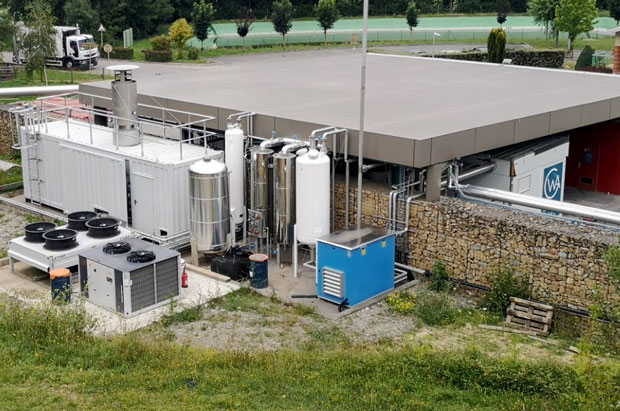
Mise en service : 16 janvier 2020
Exploitant du site de stockage des déchets : Sivom SGMAM (syndicat mixte)
- 85 000 tonnes de déchets stockés par an
- Biogaz : 45-50 % CH4 | 0-3 % O2 | 4 000 ppmv H2S | 5-20 % N2
- Distance du réseau avant travaux : 7 kilomètres
- Capacité de l’unité : 35 GWh/an

Unité WAGABOX® de Blaringhem (Hauts-de-France)

Mise en service : 2 septembre 2020
Exploitant du site de stockage des déchets : Baudelet Environnement
- 600 000 tonnes de déchets stockés par an
- Biogaz : 40-50 % CH4 | 0-3 % O2 | 300 ppmv H2S | 5-20 % N2
- Distance du réseau avant travaux : 0,7 kilomètres
- Capacité de l’unité : 25 GWh/an
En construction
- Unité WAGABOX® de Le Ham (Veolia)
- Unité WAGABOX® de Gournay (SG Gournay)
- Unité WAGABOX® de Claye-Souilly (Veolia)
- Unité WAGABOX® de Can Mata, Espagne (Ferrovial Servicios)
Exemples de réalisations
- Projet WAGABOX® 1 (2017)( pdf - 961,25 Ko )
- Projet WAGABOX® 2( pdf - 697,05 Ko )
Domaines d’intervention
Audit - Conseil - Etudes - Ingénierie - Biogaz - Centre d'Enfouissement Technique - Technologies de réduction des émissions de CO2 - Lutte contre les gaz à effet de serre - Valorisation énergétique des DéchetsCertifications, labels ou prix
Récompenses
- Prix Evolen 2020
- Grand Prix pour la Lutte contre le changement climatique de l’Ademe et du ministère de l’Écologie, du Développement durable et de l’Énergie en 2016.
- Lauréat du Concours de l’Innovation de Pollutec en 2016.
- La WAGABOX® a été labellisée en 2018 par la fondation Solar Impulse comme l’une des 1.000 Solutions pour Protéger l’Environnement.
- Lauréat du Programme d’Investissements d’Avenir (PIA) en 2015
Découvrir la technologie WAGABOX®
Production de biométhane sur les sites de stockage des déchets
Wagabox 1: measuring biogas/landfill gas composition from the inlet to the outlet

